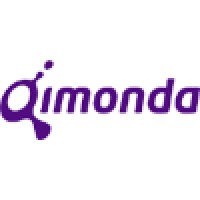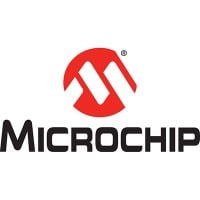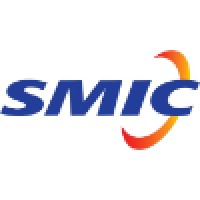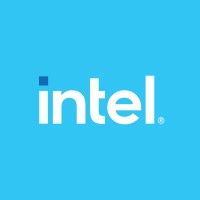Company Cyber Security Posture
NANA
NA Company Details
NA
NA
NA
NA
NA
NA
Scan still pending
NA
NA
Between 200 and 800
This score is AI-generated and less favored by cyber insurers, who prefer the TPRM score.
 NA Global Score
NA Global Score.png)

Company Scoring based on AI Models
| Model Name | Date | Description | Current Score Difference | Score |
|---|---|---|---|---|
| AVERAGE-Industry | 03-12-2025 | This score represents the average cybersecurity rating of companies already scanned within the same industry. It provides a benchmark to compare an individual company's security posture against its industry peers. | N/A | Between 200 and 800 |
Company Cyber Security News & History
| Entity | Type | Severity | Impact | Seen | Url ID | Details | View |
|---|
Company Subsidiaries

NA
Access Data Using Our API

Get company history
.png)
NA Cyber Security News
Analog Devices Launches Embedded Software Development Environment, CodeFusion Studio™ and Developer Portal to Simplify and Speed Development for the Intelligent Edge
ADI combines analog, digital, and software technologies into solutions that help drive advancements in digitized factories, mobility, and ...
Analog Devices will showcase RF, data, power solutions at IMS 2025
Analog Devices, Inc. (ADI) announced that it will be showcasing the industry's most complete, high-performance digitization and processing platform at the IMS ...
InfoComm 2025 Impulses: Audio, Cybersecurity, Analytics with Axis Communications
The new AXIS C1710 and AXIS C1720 Network Display Speakers offer a versatile solution for public address and mass communication, featuring audio ...
Analog Devices Inc (ADI) Q4 2024 Earnings Call Highlights: Navigating Challenges and ...
Full Year Revenue: $9.4 billion. Earnings Per Share (EPS): $6.38. Operating Margin: 41% for the year. Free Cash Flow Margin: 33%, ...
JPMorgan Reaffirms $300 Price Target for Analog Devices After Strong Q2
On May 22, JPMorgan reaffirmed its $300 price target and Overweight rating for Analog Devices Inc. (NASDAQ:ADI) after the company reported ...
Kansas Water Plant Pivots to Analog After Cyber Event
A water treatment facility in a small city took serious precautions to prevent any bad outcomes from a hazy cyber incident.
Tata and Analog Devices Partner for Semiconductor Growth
Tata and semiconductor firm Analog Devices announce strategic alliance to boost India's electronics manufacturing ecosystem and explore joint opportunities.
Stocks to watch this week: Palo Alto Networks, Analog Devices, Marks & Spencer, Greggs and easyJet
Diluted earnings per share came in at $0.81, which was up 11% on a year earlier, and also beat its guidance of $0.77 to $0.78 per share.
Stronger security for smart devices
Researchers are pushing to outpace hackers and develop stronger protections that keep data safe from malicious agents who would steal ...

NA Similar Companies

Qimonda
Qimonda AG (NYSE: QI) is a leading global memory supplier with a broad diversified DRAM product portfolio. The company generated net sales of Euro 3.61 billion in financial year 2007 and had approximately 13,500 employees worldwide. Qimonda has access to four 300mm manufacturing sites on three conti

Microchip Technology Inc.
Microchip Technology Inc. is a leading semiconductor supplier of smart, connected and secure embedded control solutions. Its easy-to-use development tools and comprehensive product portfolio enable customers to create optimal designs which reduce risk while lowering total system cost and time to mar

AMD
We care deeply about transforming lives with AMD technology to enrich our industry, our communities, and the world. Our mission is to build great products that accelerate next-generation computing experiences – the building blocks for the data center, artificial intelligence, PCs, gaming and embedde

SMIC
Semiconductor Manufacturing International Corporation (“SMIC” SEHK: 981; SSE: 688981), one of the leading foundries in the world, is Mainland China’s largest, most advanced semiconductor manufacturer. SMIC provides integrated circuit (IC) foundry and technology services on process nodes from 0.35 mi

Intel Corporation
Intel’s mission is to shape the future of technology to help create a better future for the entire world. By pushing forward in fields like AI, analytics and cloud-to-edge technology, Intel’s work is at the heart of countless innovations. From major breakthroughs like self-driving cars and rebuildin
Semiconductor Companies
Semiconductor Companies, either fabless or with dedicated foundry, are more and more demanding for external personpower in order to meet market driven dynamic product design request. Consultants are thus a valuable resource for most competitive Semiconductor Companies. For suggestions, info, profile

Frequently Asked Questions
Explore insights on cybersecurity incidents, risk posture, and Rankiteo's assessments.
NA CyberSecurity History Information
How many cyber incidents has NA faced?
Total Incidents: According to Rankiteo, NA has faced 0 incidents in the past.
What types of cybersecurity incidents have occurred at NA?
Incident Types: The types of cybersecurity incidents that have occurred include .
Additional Questions
What Do We Measure?
















Every week, Rankiteo analyzes billions of signals to give organizations a sharper, faster view of emerging risks. With deeper, more actionable intelligence at their fingertips, security teams can outpace threat actors, respond instantly to Zero-Day attacks, and dramatically shrink their risk exposure window.
These are some of the factors we use to calculate the overall score:
Identify exposed access points, detect misconfigured SSL certificates, and uncover vulnerabilities across the network infrastructure.
Gain visibility into the software components used within an organization to detect vulnerabilities, manage risk, and ensure supply chain security.
Monitor and manage all IT assets and their configurations to ensure accurate, real-time visibility across the company's technology environment.
Leverage real-time insights on active threats, malware campaigns, and emerging vulnerabilities to proactively defend against evolving cyberattacks.




